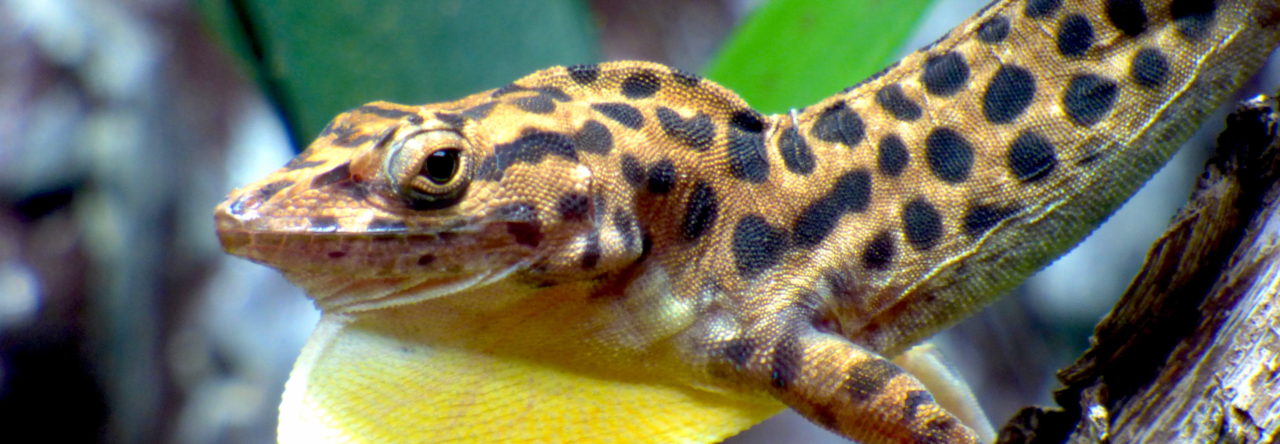
Anole egg from http://www.anoleimaging.com/Anoles/ag_16_egg2.html
A concerned Anole Annals reader writes in:
My dog just violently chomped a female alone. Along with her entrails protruding from her body we two eggs. One was small, under-developed the other was the size they are laid. I have at the time done my best to put it into a container and emulate the same conditions outside ( I live in Florida) with dirt, leaf litter (small) moisture and heat. I removed the placental outer membrane which would have been separated if she had laid. I feel terrible my young and excitable dog did this. Is there any hope?
Can anyone advise?
Latest posts by Jonathan Losos (see all)
- Evolution in Real Time on Lizard Island - March 23, 2025
- Spider Snags Adult Anolis osa - March 22, 2025
- An Homage to the Green Anoles of New Orleans - March 21, 2025


grackle
The sciencey people will no doubt be along shortly. Meanwhile keep the container moderately moist as though it had a plant. That is no standing water. I read that the embryo attaches within 24 hours and then rotation is very bad.
Watch for slugs and other predators of eggs and there is a real possibility of a hatch in a couple of months if it was about to be laid.
Yann Horstink
This egg will most likely hatch soon. It seems to be in excellent condition, and may have been developing for at least several weeks.
Incubating anole eggs is really easy. Use a small, well ventilated box, filled with something like slithly moisturised dirt, peat, vermiculite or similar. Place the egg half way in it. On top of the box should be an transparent cover lid. Make sure moisture is not hang on it to much. If so, remove the water from it (it might be the substrate is to moisture). The box should be kept out of direct sunlight at temperature between 24-26 °C. Usually eggs will hatch after 50-70 days (depending on temperature and species).
Eggs will hatch to when the are covered with litter (or similar), and can handle a wider range of temperature for sure.
Btw, different than in other species, anole eggs have less problems when being turned over than most other reptiles. There is experience in eggs from Anolis distichus that where send by airmail from DR to Europe, from which still a large part hachted without any problems. I have similar experience in giant species, and species like allisoni, marmoratus, krugi and trinitatis. Eggs that where dug up in the tank and accidentally rolled over always hatched.
grackle
Yann, I’m delighted to hear that I can relax a bit about marking the tops of eggs. So often that we grab onto as vital factoids that end up barely relevant.
Chelle
OP here…I have marked the top of the egg with a tiny dot from a fine tipped sharpie. I am not certain of the species as they tend to change color when threatened…or chomped in this case.
As I am not intending to keep this baby (if it should hatch) as a pet, I’m wondering if finding a safe spot and placing the egg where I know it will be safe but hatch into the wild. I have a HUGE peace plant (it weights well over 35# and is in a very large pot) and I’ve found anole eggs both hatched and whole in its soil base. It’s a very thick foliage plant and not something most predators would attempt and who who could the egg would be too small for them to take interest. It’s would be in the natural-ish environment and proper temperature with as minimal human interaction as possible. Sure, I’d love to see it hatch and set it free, but that’s not the life it needs. I know it’s just an anole…as common as toads, frogs and all the other scampering creatures here, but it’s still a living thing and I want it to succeed.
Before releasing…if you all think this is a good idea, I’d like to candle it. How soon can this be done and what exactly am I looking for. I’ve candled chicken eggs, but there’s a huge size difference. With what should I attempt to candle it without blinding myself? Thanks again for all help give.
I’m originally from Las Vegas and they’d sell these and juveniles for30-40$. That always made me laugh as Ive always visited FL for family.
Skip Lazell
If/when it hatches do another AA to let us know, and what species….
Chelle
I’s sad to say that the egg is not viable. It’s sad, but the story has an ending, now.
Thanks to everyone for their help!